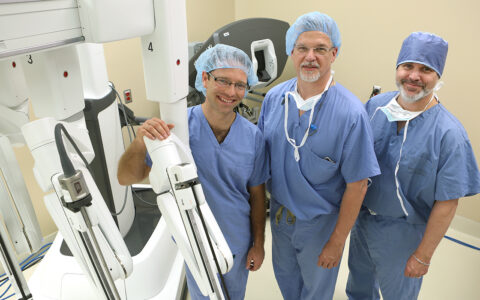Opioid-free management of postsurgical pain is proving to be effective in reducing opioid exposure to patients and communities. Focusing on urologic postoperative prescribing, a recent white paper from the American Urological Association provides research-backed strategies for management of acute pain with minimal to no opioid prescribing.
“Surgeons do not need to rely on opioids to treat postoperative pain,” said Jennifer Robles, M.D., chair of the workgroup that authored the publication and an assistant professor of urology at Vanderbilt University Medical Center.
“There are proven pain management strategies that involve little to no opioid prescribing,” Robles added. “Our goal in writing the white paper was to provide clarity on the subject along with practical insights in an effort to reduce prescribing.”
Managing Pain Expectations
One key step in reducing opioid prescribing, Robles explains, is managing patient expectations regarding postoperative pain.
Studies show that preoperative education regarding both the side effects of opioids and the variety of non-opioid options can lead patients to turn down opioid prescriptions. In addition, preoperative counseling regarding pain expectations has been shown to shorten the duration of opioid use.
“Surgeons do not need to rely on opioids to treat postoperative pain.”
Robles stresses that providers should communicate to patients that the goal is not to reach zero pain, but to reach a tolerable pain level for recovery.
Prescribing Non-opioids First
Another recommendation is the use of non-opioid multimodal therapies as the first-line treatment for pain, with one of the most researched combinations being acetaminophen paired with nonsteroidal anti-inflammatory drugs (NSAIDs).
“Acetaminophen used in combination with NSAIDs has been found to have a synergistic effect and be more effective in terms of pain intensity and analgesic supplementation when compared to acetaminophen or NSAID alone,” wrote the workgroup.
As another component to improve pain control, non-pharmacologic or behavioral interventions, like mindfulness meditation, can be incorporated into the multimodal approach.
“We can now work to curtail this crisis by incorporating non-opioid multimodal therapies that are not only effective but that also reduce the diversion of opioids into the community.”
While tramadol, gabapentinoids, muscle relaxants and adjuncts for stent-related pain may pose benefits, the authors stress that risks associated with their use should be carefully considered.
Dose Reduction
If opioids are deemed necessary, lower doses are likely more effective than many realize. Robles points to a landmark statewide analysis in Michigan which found that reductions in opioid prescription size did not negatively affect patient satisfaction or pain. A growing list of studies confirms these findings.
Toward reducing prescription size, Robles explains that a few adjustments to prescribing habits can help.
“One of the easiest strategies is to reduce the default setting regarding pill quantity in the EHR system from 30 pills to 12, for example. Another is to base postoperative opioid prescriptions on the lowest effective dose used the day before discharge.”
An additional strategy emphasizes the utility of electronic prescribing.
“Transition prescribing for most opioid-naïve endourologic or minimally invasive surgery patients away from default ‘just in case’ opioid prescriptions that are not based on clinical judgement,” wrote Robles and colleagues. “If needed, opioids can easily be prescribed electronically.”
The Danger of Over-prescribing
Approximately six percent of opioid-naïve patients who are prescribed opioids after surgery go on to be persistent users. Robles says it is clear that highly variable postoperative pain management strategies have created unnecessary and risky exposures to opioid medications. Within urology specifically, Robles has reported on the alarming frequency of over-prescribing after surgery.
She is confident that multimodal therapies and changes in prescribing habits can help providers dramatically reduce postoperative opioid prescriptions for urologic patients without harm.
“While unintentional, routine prescribing of large quantities of opioids played a large role in our current opioid crisis,” Robles said. “As urologists, we can now work to curtail this crisis by incorporating non-opioid multimodal therapies that are not only effective but that also reduce the diversion of opioids into the community.”




